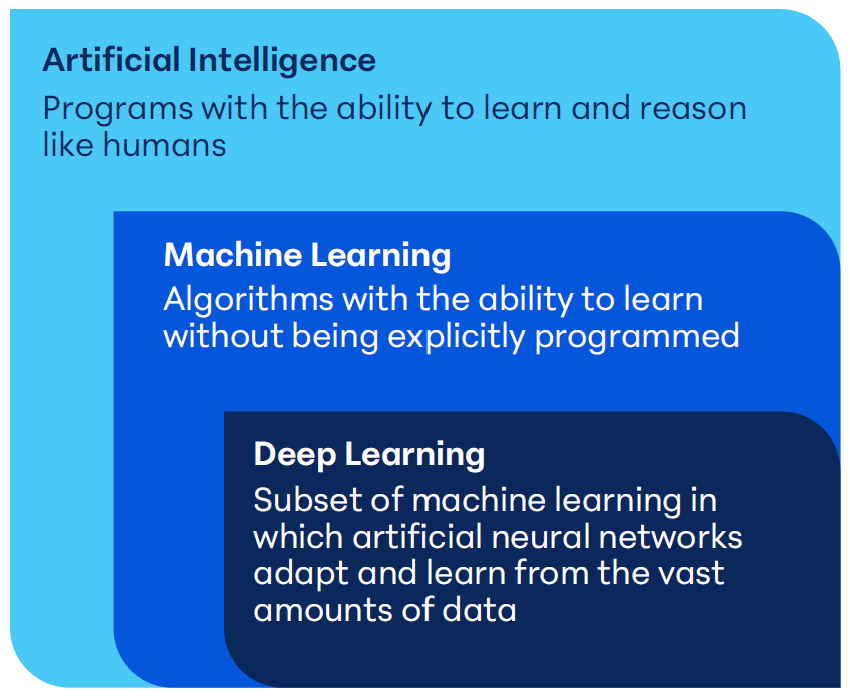Understanding Key Terms and Technologies Shaping Business Solutions

A Universe of Tools

Key AI terms:
- Facial recognition: Unlocking devices securely through facial recognition software.
- Medical imaging analysis: Detecting abnormalities in medical scans to aid diagnoses.
- Predictive analytics: Forecasting sales trends, estimating stock prices, or optimizing resource allocation.
- Fraud detection: Identifying suspicious patterns in financial transactions to prevent fraud.
Large Language Model (LLM) : A broad category of advanced programming in it's own right, LLMs are a subset and specialized application of Machine Learning (which is of course under the even broader subject of AI) focused on processing and generating human language at a large scale. Unlike traditional ML techniques primarily concerned with data analysis, LLMs excel at the complexities of natural human language processing tasks like understanding and responding to written or spoken language. Deep learning, a powerful technique within ML, plays a significant role in LLM development. Examples of LLM you might use today include:
- Chatbots that can provide customer service or answer questions conversationally.
- Translation tools that can translate languages accurately and fluently.
- Text summarization tools that can condense lengthy documents into concise summaries.
Generative Pre-trained Transformer (GPT) : Many have heard of or even used GPT. Drilling down a little further, GPT refers to a specific type of LLM architecture developed by OpenAI. GPT models are trained on massive amounts of text data, allowing them to generate realistic and creative text formats, like poems, code, scripts, musical pieces, email, letters, etc. While GPT is a powerful and well-known LLM, it's important to remember it's just one example within the broader category of Large Language Models. Examples include: BERT, T5, GPT, and other language models developed by different organizations.
An illustration
Here's an analogy to illustrate the levels, layers, and differences:
AI = music
ML = Rock
LLM = Classic Rock
GPT = Led Zeppelin
This is elementary and could certainly be expanded to include the many of the other subsets of AI.
But wait, there's more
AI Readiness Assessment
Am I ready for AI?
Can AI help me and my business?
Where should I start?
Get your custom report now
This innovative tool streamlines and focuses your AI strategy by asking the right questions, matching your business needs with solutions and suppliers, and eliminates guesswork.
You'll get a custom, tailored report specifically for you and your situation - giving you clear guidance on where to start and a radmap for the future.
Increase value to your stakeholders and ownership - we'll help you become an AI expert.
About Cloud 9
At Cloud 9, we are deeply passionate about the transformative power of emerging technologies like AI (or ANI, wink, wink) and are committed to helping our clients harness its immense potential. We help clients leverage our unparalleled education, resources, and supplier guidance for cutting-edge AI technologies across CX, cybersecurity, cloud, mobility, IoT, and advanced networking. Our engineering and architecture staff are at the forefront of AI-driven business transformation, ready to guide you through identifying and seizing new AI opportunities to meet you most critical business challenges now and as your business evolves.

